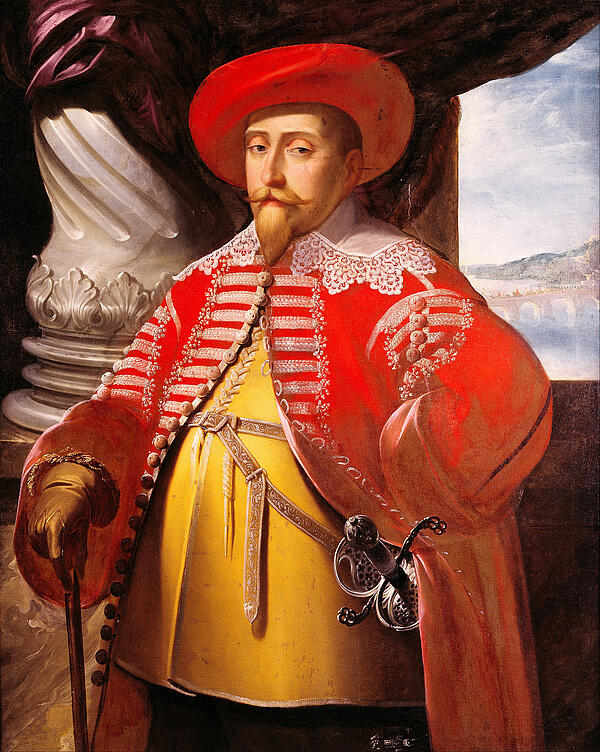Gustavus Adolphus
Gustavus Adolphus was a king who led Sweden during the Thirty Years War. He is seen as a great leader who allowed Sweden to become the most powerful state in the Baltic Region.
The parents of Gustavus Adolphus were Charles IX and Christina of Holstein. He married Maria Eleonora; their only surviving child was Christina, who later ruled as Queen of Sweden.
Gustavus Adolphus became king in 1611, at the age of 17. The nobility could have taken advantage of his youth. However, the young king had been tutored by Johan Skytte, who had ensured that the prince was well prepared for his future job.
Gustavus was intelligent and erudite. He was educated in Law, Classics, Theology and History. He was also fluent in German and spoke several languages well. He attended council meetings from the age of 10. Even at the age of 17, he had a good knowledge of affairs of state. He possessed a natural talent for leading soldiers and educated himself in logistics, modern artillery, strategy and military organisation. In this, he learnt much from Maurice of Nassau.
Gustavus was a good public speaker. He also took his religion very seriously.

When Gustavus took to the throne in 1611, Sweden was in a weak position. His father, Charles IX, had reduced the power of the nobility. Because of Gustavus’ youth, the elite attempted to regain some of that power. In 1612, Gustavus Adolphus was made to accept the Accession Charter. In this he agreed to give all seats on the council and important seats in the administration to those in the elite ranks of society. He would also consult the council on his policies.
Yet, this humiliation did not cause discord between Gustavus and the nobility. In fact, Gustavus maintained a good relationship with the nobility. This was evident in the king’s close friendship with a leading noble, Axel Oxenstierna. The king also won the support of the people, represented in the Riksdag (the Diet) where they could air their opinions. Issues like conscription therefore did not trigger instability.
Gustavus Adolphus was an unusual 17th century monarch in his ability to win the support of most sections of society. Gustavus and Oxenstierna also introduced important domestic reforms in Sweden.
In March 1632, Gustavus Adolphus invaded Bavaria, a staunch ally of the Emperor. He forced the withdrawal of his Catholic opponents at the Battle of Rain. This would mark the high point of the campaign. In the summer of that year, he sought a political solution that would preserve the existing structure of states in Germany, while guaranteeing the security of its Protestants. But achieving these objectives depended on his continued success on the battlefield.
However, Gustavus was killed at the Battle of Lutzen in 1632 while leading a cavalry charge. In the thick mix of gun smoke and fog covering the field, he was separated from his fellow riders and killed by several shots.
Gustav Adolf's success in making Sweden one of the great powers of Europe, and perhaps the most important power in the Thirty Years' War after France and Spain, was not only as a result of his military brilliance, but also to important institutional reforms in Sweden's government.
See also: Gustavus Adolphus - Domestic Policy
MLA Citation/Reference
"Gustavus Adolphus". HistoryLearning.com. 2026. Web.
